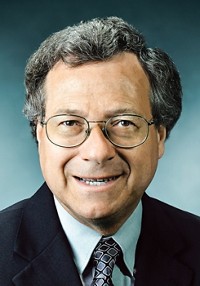Advertisement
Grab your lab coat. Let's get started
Welcome!
Welcome!
Create an account below to get 6 C&EN articles per month, receive newsletters and more - all free.
It seems this is your first time logging in online. Please enter the following information to continue.
As an ACS member you automatically get access to this site. All we need is few more details to create your reading experience.
Not you? Sign in with a different account.
Not you? Sign in with a different account.
ERROR 1
ERROR 1
ERROR 2
ERROR 2
ERROR 2
ERROR 2
ERROR 2
Password and Confirm password must match.
If you have an ACS member number, please enter it here so we can link this account to your membership. (optional)
ERROR 2
ACS values your privacy. By submitting your information, you are gaining access to C&EN and subscribing to our weekly newsletter. We use the information you provide to make your reading experience better, and we will never sell your data to third party members.
Education
New Education Tools
Web-based social software is changing the way chemistry is taught
by Rachel Petkewich
April 23, 2007
| A version of this story appeared in
Volume 85, Issue 17

PROFESSORS are constantly looking for presentation methods that resonate with students. They also look for ways to make more efficient use of their own time. Social software, also called social networking tools, can help with both objectives, according to chemistry professors who have integrated these Web-based methods into their work. Although professors say adding the software can increase their own workload, the students have responded positively.
At the ACS national meeting last month in Chicago, presentations about using tools such as podcasts, vodcasts, tagging, really simple syndication (RSS), blogs, and wikis drew a crowd to a daylong symposium cosponsored by the Divisions of Chemical Education and Chemical Information. Speakers explained how they had successfully incorporated one or more tools to improve undergraduate chemistry courses and research programs.
"Social networking is not just about cool technology gadgets," said Harry E. Pence, a chemistry professor at State University of New York, Oneonta. The tools also provide what he believes is a healthy challenge to traditional ideas about chemistry research and education. Pence coorganized the symposium with Andrea Gay, a postdoctoral fellow at Washington University in St. Louis.
Some of the educators said they use free or low-cost tools to enhance traditional teaching methods or to appeal to different learning styles, while other professors said the tools enable them to completely revamp the way they conduct their courses.
The educators warned that not all students will catch on immediately. There is a misconception that all students are tech-savvy, said Jean-Claude Bradley, an associate professor of chemistry at Drexel University. He said that in reality up to 20% of all students shy away from using technology and need coaching.
Because podcasts and vodcasts of lectures and other material can be accessed outside of classrooms, they have the potential to reduce classroom attendance. For this reason, these tools were perhaps the most controversial of all of the tools mentioned in the symposium. Generally, podcasts are audio files and vodcasts are video files that can be downloaded from the Web. The recordings can be played back on either a computer with iTunes or Quicktime software or a portable digital media player, such as an iPod.
John I. Gelder, a chemistry professor at Oklahoma State University, has been providing his students with videotaped lectures for six years and has been doing more sophisticated vodcasting since the fall of 2005. His class lectures are taped in front of students, but he also tapes additional materials, including reviews of exams or problem sets, in a studio on campus.
When Gelder surveyed his semester-long introductory chemistry class of 89 students, he discovered that 64% looked at vodcasts of lectures and 92% viewed studio-recorded reviews of exams and homework sets.
If students can listen to or view lectures elsewhere, what is the incentive to go to class? Gelder, like some other professors who videotape lectures, periodically collects in-class exercises without warning. Performance on those exercises equates to about 3% of Gelder's course grade. Students said that gave them a nudge to attend class.
Keith A. Walters, an assistant chemistry professor at Northern Kentucky University, vodcasts some of his lectures and also does in-class exercises to ensure attendance. The picture quality of his recorded lectures is lousy, he admitted, but that shouldn't matter because students are supposed to come to class and write their own notes anyway. About 60% of his students look at the videos, but the jury is still out on whether the material really helps improve their grades, he said.
Bradley said he does not care if his organic chemistry students attend class, but he does want them to learn the material. He tapes all of his lectures as "screencasts"???which he defines as a "poor man's webcast because it does not require video recording equipment"???and archives them online (chem241.wikispaces.com). Students do not see him lecturing in the screencast; instead they hear his voice and see what he draws. They can pause, stop, or rewind the lecture if necessary, as well as see homework and extra problems worked out step-by-step. Bradley uses the time scheduled for class solely to answer students' questions.
While Bradley, Walters, and Gelder are making extensive use of social software tools in their classrooms, other professors are taking smaller steps to introduce social software into their classes and research groups, often with the help of librarians.
Two science librarians described how RSS feeds and tagging can help professors teach their students. RSS allows users to track new Web content on multiple websites without having to visit each website individually, said Teri M. Vogel, a librarian in the science and engineering library at the University of California, San Diego. Users set up an RSS aggregator to subscribe to RSS feeds from sites of interest, such as those for scientific journals, databases, and news. The aggregator checks those sites regularly for new content. When users are ready for updates, they can view the aggregator's collected content via a Web browser or a desktop application.
RSS feeds are a good way to get information, such as newly posted journal articles, to students. Some university libraries have RSS feeds that can alert students when new books are acquired, Vogel added. But as she noted, "the content will not read itself," and it's important to set aside time to go through RSS feeds.
Using simple software, professors can also remix and repurpose RSS to create for students a customized blend of current information based on feeds from sites that provide materials such as journals, news, and databases, Vogel said.
Judith N. Currano, head of the University of Pennsylvania's chemistry library, described a practice called tagging or social bookmarking. This practice is defined as saving bookmarks to a publicly accessible website rather than to a browser. The person who saves the bookmarks, using services such as del.icio.us, citeulike.org, and connotea.org, categorizes the bookmarked sites with keywords known as tags. Currano likened the practice to "opening up your file cabinet to the rest of the world."
TAGGING has great potential for distance learning because users can save and share tagged bookmarks from any location, unlike bookmarks saved by using traditional browsers, she noted.
Laura Pence, an associate chemistry professor at the University of Hartford, plans to replace the textbook in her upcoming summer course called "Chemistry for the Consumer" with information gathered from tagged sites and RSS feeds. Her success with an RSS project this past semester inspired her to make the change.
"How do students learn to read literature?" she asked the audience. "The standard is: 'Here-read this.' " That hands-off approach provides little support to students. So she uses RSS as part of a step-by-step method to get students interested in the chemical literature and to teach them how to comprehend journal papers.
Pence asks students in her advanced inorganic chemistry class to subscribe to RSS feeds from the journal Inorganic Chemistry, because it has relevant subject material and the university has an online subscription. Through the semester, she takes a paper from the feed and creates a question about it for each week's problem set. Questions target various sections of the paper, such as the introduction or figures.
Pence said the RSS feed forces her to stay up-to-date with the literature and to make time to read it. Her students told her they like reading current literature and even look up extra reference papers on their own.
Blogs, another example of social software, help give students access to different perspectives about how chemistry fits into the world. Originally called Web logs, blogs are websites with diary-style entries that are generally presented in reverse chronological order. Many blogs offer an RSS feed, too.
Michelle M. Francl, a chemistry professor at Bryn Mawr College, in Pennsylvania, uses her blog as a way to bring to her students more chemistry than she can fit in her general or quantum chemistry classes. Her students read and like the blog, even though reading it is not required in her classes. Nonstudents can also read her blog.
Francl's blog is called "The Culture of Chemistry" (cultureofchemistry.blogspot.com). She said her content primarily comes from her life experiences, including two curious sons. Francl recounts, for example, pulling DNA from peas in her kitchen and wondering about the half-life of Benadryl in the body. The project started in 2004 as part of a National Science Foundation grant to write teaching materials for physical chemistry students and a broader audience.
Francl said blogging certainly makes her classroom more global, as she gets about 70 daily hits to her infrequent postings. Francl noticed that people read during the week more than on the weekends and, presumably, at work.
Another tool that appeals to some chemistry educators is the wiki. Derived from the Hawaiian word for "quick," a wiki is defined as a collaborative website with content that can be directly edited by people with access. A wiki can resemble a blog, but a blog is defined by its chronological sequence of posts, Bradley said. A wiki, however, "does not restrict the arrangement of information." In addition, he noted, blogs tend to be written by individuals, whereas wikis are often collaborative endeavors.
Bradley posts his lectures and all other information for his class on a wiki with open access. He also has an open-access wiki for his research group (usefulchem.wikispaces.com), where the students' lab notebooks are freely available to anyone in the world who wants to read them. His group will write and edit manuscripts using the wiki itself and invite any interested person to edit them.
Walters uses a wiki with access limited to his undergraduate lab group. The students post descriptions of successful experimental procedures to the wiki, to avoid searching through notebook pages when the procedures are needed again. He said the wiki will never replace the lab notebook for official record keeping, but it provides another repository for commonly accessed information. His students told C&EN they really like that aspect of the wiki. Walters wants to expand the wiki this summer and have students in the group collaborate on paper writing, too.
Professors said social software can also be useful in classes with Web-based laboratory components. Associate professor Ren??e S. Cole at Central Missouri State University teaches physical chemistry classes where the students do collaborative laboratory work online. She said social software helps students learn complex information. Moreover, she said that online groups need as many levels of communication as possible and that "social networking tools have the potential to support and enhance online learning." For example, professors like the archival functions of the social software systems that aren't available in, for example, instant messaging.
What is the future of social software for teaching chemistry to undergraduates? Father-daughter team Harry and Laura Pence hope to answer that question in a symposium planned for the ACS national meeting in New Orleans in 2008. They are interested in expanding the discussion to see how social software facilitates chemistry in industry, government, and other sectors as well.





Join the conversation
Contact the reporter
Submit a Letter to the Editor for publication
Engage with us on Twitter